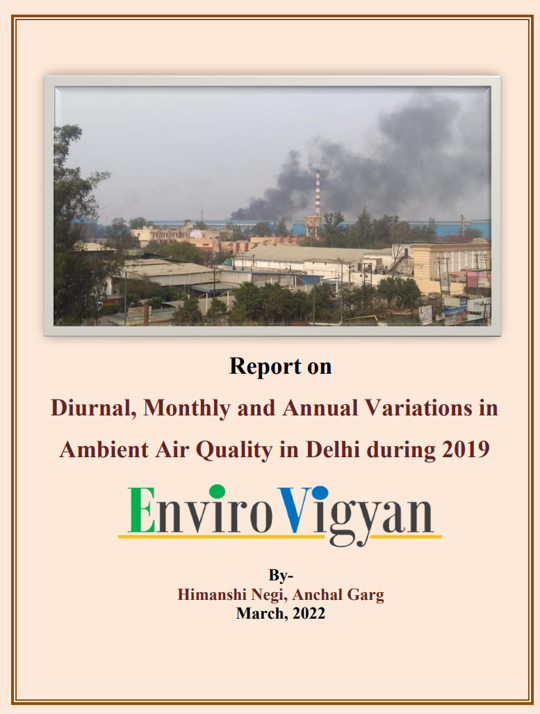Diurnal, Monthly and Annual Variations in Ambient Air Quality in Delhi during 2019

Ambient air pollution consists of various pollutants including gaseous and particulate matter that are discussed in detail in this report. Delhi’s air is always coming into highlights due to its poor quality. In this report, measurements of hourly and daily air quality for various air pollutants (PM2.5, PM10, SO2, NO2, O3, C6H6) were analyzed for different locations in Delhi divided on the basis of lying in the region of North, West, East, South and Central Delhi. Delhi’s air quality data and meteorological data has been analyzed from 1 January, 2019 - 31 January, 2019. Overall study is divided into 3 sub topics - finding out the levels of gaseous and particulate pollutant in Delhi’s ambient air, assessing seasonal and diurnal variations in air pollution and identifying the effect of meteorological parameters on air quality.
The findings shows that East Delhi recorded the highest monthly concentration levels for PM2.5, PM10, NO2 and C6H6. Peaks for PM2.5 and PM10 were observed in the month of November and exceeded the National Ambient Air Quality Standards (NAAQS) for most part of the year excluding the months of monsoon season. Peak for NO2 was observed in the month of December. SO2 and O3 levels were always found below their NAAQS. The correlation matrix showed that PM2.5 and PM10 possessed a strong positive correlation of +0.88. Negative correlation between air pollutants with ambient temperature and wind speed shows the role of meteorology in the seasonal variation in air pollutants. Through this entire study, we have identified that pollutant levels were not higher throughout year, there are some months when the levels were lower, for example during monsoon season, precipitation occurs and it does not allow the pollutants to rise high up in the air, wind speed is also higher and stronger during monsoon which disperses the pollutants.
View Report